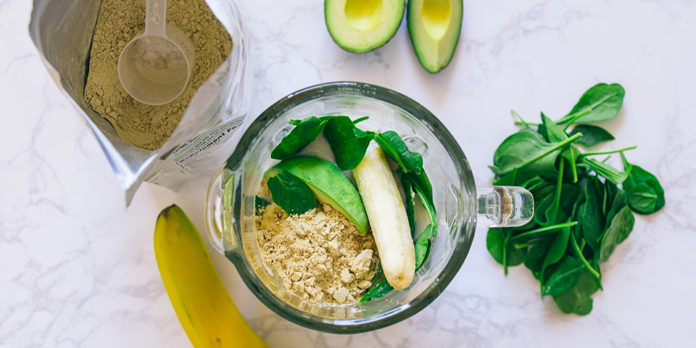You probably know by now that if you want to get healthy and fit, Shakeology can play a key role in helping you hit that goal.
This superfood supplement shake works by filling some of the nutritional gaps in your diet with ingredients that can benefit your overall health, help support healthy energy,† and support your digestive healthǂ.
When you drink a daily Shakeology, it can help you build the strong nutritional foundation you need to take on bigger challenges like a fitness program or a healthier diet.
Shakeology includes a variety of nutrients, including protein, carbs, fiber, phytonutrients, antioxidants, digestive enzymes, pre- and probiotics, adaptogens, vitamins, and minerals.
But you’re probably thinking to yourself, “OK, that all sounds great, but what about sugar?”
That’s an excellent question because there’s ample evidence that sugar doesn’t do sweet things to your health. So, yes, it’s a good thing to keep an eye on how much sugar you’re consuming on a daily basis.
Here’s the 411 on sugar and Shakeology.
Note: This article is intended for the U.K. audience. Click here for the U.S. version.
Shakeology Sugar Content
Shakeology contains seven grams of sugar per serving from a combination of organic cane sugar and various superfood fruit powders. (Plant-Based Vegan Chocolate contains six grams per serving.)
To put this into perspective, there are 14 grams of sugar in a medium banana and 19 grams of sugar in a medium apple.
We formulated Shakeology using a carefully selected sweetener system containing organic cane sugar and a plant-based, no-calorie sweetener — stevia, an extract from the leaves of the stevia plant that’s 150 times sweeter than sugar.
That’s it.
Sugar vs. Sweeteners
Sweetness can be achieved a variety of ways: First, there’s sugar, which can be found listed as “Sugars” under the Total Carbohydrate section on the label – which includes both sugar-based ingredients and sugars inherent in other botanical ingredients in the product.
Sugar-based ingredients come in many forms including cane sugar, honey, molasses, and more controversial ingredients such as high fructose corn syrup (HFCS).
Sugar can also be found within other ingredients in a product, such as skimmed milk powder, which contains lactose (milk sugar) and fruit powders, which contain fruit sugar (fructose).
Sugar is nutritive, meaning it contains calories, versus non-nutritive sweeteners, meaning ingredients that add flavor but little-or-no calories.
Non-nutritive sweeteners include artificial sweeteners like aspartame and sucralose, as well as plant-based sweeteners like stevia.
The easiest way to sweeten something is to just add sugar, but that drives the calories up, which isn’t always the best way to go.
While non-nutritive sweeteners solve the calorie issue, they tend to have their own unique properties and challenges.
Therefore, to find a balance of flavor, sweetness, and smart nutrition, it often makes sense to use a combination of sugar and sweeteners.
Sugar Content Information
To see the sugar content in a product, check out the Nutrition Declaration box on the back of the label, which is required to list the sugars in a product.
Some products will claim “no sugar added” on the front of their packaging. But that doesn’t mean these products are entirely free of sugar. It just means the sugars in the product aren’t “added sugars.” Rather, the sugars are inherent in other ingredients.
Sugar can go by many names, so it’s important to recognize other ways sugar can be hidden in the ingredient list:
- fruit juice concentrate
- cane juice
- turbinado
- malt syrup
- corn syrup solids
- dextrin
- words that end in –ose, like maltose, dextrose, and fructose
In the “Ingredients” section on a typical food label, they are listed in order of greatest to least amount.
The Bottom Line
Following a healthy, balanced diet doesn’t mean cutting sugar out completely. By making smart food choices, you can still enjoy the sweetness in life!
†Vitamins C, B6, and B12 contribute to normal energy-yielding metabolism.
ǂ Calcium contributes to the normal function of digestive enzymes.


























